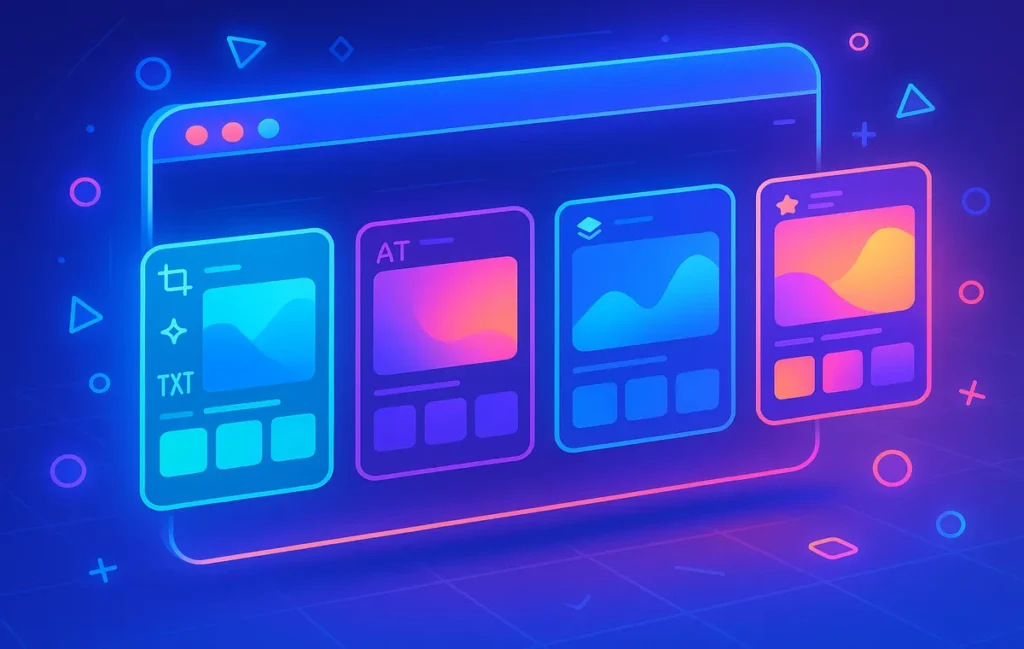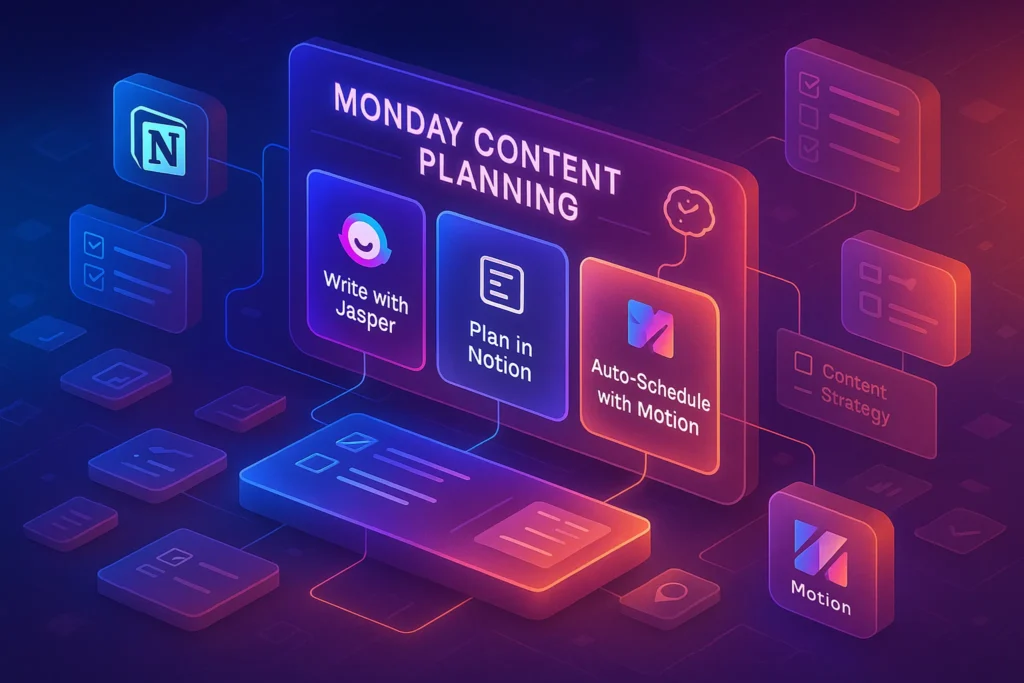Intro:
Editing images no longer requires installing bulky software or mastering complex design tools. In 2025, browser-based image editing apps have become powerful, accessible, and surprisingly professional. Whether you’re a blogger creating visuals for your next post, a marketer designing ad creatives, or simply someone who needs a quick background remover, online editors like Canva, Adobe Express, Pixlr, and Fotor are changing the game.
What makes them stand out is their ability to combine speed, accessibility, and AI-driven features—right from your browser. No downloads, no waiting, just instant creation.
💡 Nerd Tip: Think of online image editors as your “creative emergency kit”—always available, fast-loading, and perfect when deadlines sneak up on you.
🎨 Why Online Image Editing Apps Dominate in 2025
The rise of remote work and the content-first economy has created a new demand: editing on the go. Traditional tools like Photoshop still dominate professional studios, but the average creator values speed over complexity. According to recent surveys, over 68% of small businesses now prefer online editors for their social media visuals because they cut editing time by half.
The shift is also fueled by AI. Browser-based apps are embedding AI-powered features such as one-click background removers, smart resize for multiple platforms, and even text-to-image generation. This has blurred the line between “simple editor” and “creative powerhouse.”
For instance, a travel blogger once shared on X that she could “design, resize, and export 5 platform-ready images in under 15 minutes using Canva,” a task that previously took her an hour in Photoshop. That time efficiency is why quick-edit apps are now must-have tools.
And if you’re building a content stack, integrating these editors alongside workflow tools (like Zapier or HARPA AI) creates a streamlined publishing pipeline that saves hours each week.
🖼️ Canva: The All-in-One Design Powerhouse
Canva remains the undisputed leader in the browser-editing space. Its appeal lies in versatility. From designing Instagram carousels to exporting infographics, Canva delivers a smooth experience without overwhelming new users.
What’s new in 2025 is Canva’s AI-driven Magic Studio. With features like text-to-image and instant video resizing, Canva is no longer just an editor—it’s a creative assistant. Bloggers who compare Canva vs Adobe Express often highlight Canva’s superior template ecosystem, which helps non-designers create polished visuals in minutes.
💡 Nerd Tip: Use Canva’s “Magic Resize” feature to instantly adapt one design for Twitter, LinkedIn, and Pinterest—perfect for repurposing blog graphics across multiple channels.
Canva also integrates seamlessly with workflow stacks. Pairing it with content tools (like the ones covered in our guide on Top 10 Content Creation Tools for Bloggers & Designers) makes Canva the ultimate hub for quick visual storytelling.
⚡ Upgrade Your Visual Workflow
Looking for effortless, pro-level image editing? Tools like Canva and Adobe Express give you studio-grade results without the learning curve. Try them now and simplify your creative process.
🌟 Adobe Express: Streamlined Creativity with AI
Adobe Express (formerly Spark) has taken a bold leap in 2025. Once considered the “lightweight cousin” of Photoshop, it now leverages Adobe Firefly AI for quick, professional-grade edits.
Marketers love it for its brand kit feature, which stores fonts, logos, and brand colors to ensure every graphic is consistent. Bloggers designing infographics also appreciate how Adobe Express handles typography—making it easier to create clean, readable visuals.
On social media, one user described Adobe Express as “the fastest way to get a brand-safe graphic out the door when your team Slacks you last minute.” That sense of control and reliability explains why it’s gaining ground against Canva.
If you’re weighing options, check our detailed breakdown in Canva vs Adobe Express, where we cover performance, templates, and workflow integration for creators.
⚡ Pixlr: Quick Edits for the Fast-Paced Creator
Pixlr has carved out a niche as the speed king of image editing apps online. Its lightweight interface loads in seconds, making it ideal for creators who need edits without delay.
What stands out is Pixlr’s AI Cutout tool, which isolates objects with near-perfect accuracy—something that used to require Photoshop expertise. For example, product sellers on Etsy often use Pixlr to remove busy backgrounds before listing items, shaving off hours of manual editing.
💡 Nerd Tip: Keep Pixlr bookmarked for emergency edits. It’s the browser equivalent of a pocketknife—fast, sharp, and always useful when deadlines close in.
Pixlr is especially useful for quick marketing visuals. Pairing it with strategies from our guide on Social Media Marketing ensures your images aren’t just quick to make but also optimized to drive clicks.
🎯 Fotor: Simplifying AI-Powered Editing
Fotor has quietly become a favorite among bloggers who need balance between simplicity and advanced AI features. In 2025, it shines with tools like AI-driven color correction, HDR filters, and one-click background blur.
Creators who struggle with image consistency love Fotor because it lets them batch-edit with presets. If you’re designing infographics (like we’ve explored in our guide on Designing Infographics), Fotor’s preset color schemes help keep your visuals aligned with brand tone.
One creator shared on Reddit that Fotor “saved me two hours per week editing my e-commerce product shots—everything looked sharper and more professional with minimal effort.”
The app also makes exporting painless. From PNGs for transparent logos to high-resolution JPGs for web publishing, Fotor ensures your workflow stays frictionless.
🚀 How These Tools Transform the Creator Workflow
The real power of online image editing apps isn’t just speed—it’s how they integrate into a larger content ecosystem. When combined with scheduling tools and AI-driven content platforms, they enable a “concept-to-publish” cycle that can be completed in under an hour.
This efficiency matters in 2025, where content cycles are shorter and competition is intense. A blogger producing ten posts a week, for example, could easily save 5–10 hours per week by switching from desktop editing suites to browser-based quick editors.
That’s not just productivity—it’s a strategic edge. For creators exploring The Future of Content Creation, mastering these tools is a step toward building scalable, automated workflows.
📊 Performance & Benchmark Insights
Speed matters. In a recent benchmark test comparing online editors:
-
Pixlr loaded in under 3 seconds on a mid-range laptop.
-
Canva took around 6 seconds but offered the richest feature set.
-
Adobe Express balanced both, loading in 5 seconds but handling larger files more reliably.
For creators publishing 10+ visuals per day, these small differences add up. Saving even 3–5 seconds per file could mean reclaiming hours of editing time each month.
💡 Nerd Tip: If you’re in high-volume workflows, test loading speeds of these apps on your device—it directly impacts your daily efficiency.
👩💻 Real Use Cases: Who Benefits Most?
Different personas benefit from these tools in unique ways:
-
Travel Blogger: Uses Canva’s Magic Resize to push one image across Instagram, Pinterest, and LinkedIn in minutes, freeing up time for actual writing.
-
Etsy Seller: Relies on Pixlr’s AI Cutout to clean product backgrounds quickly, boosting product appeal and conversion rates.
-
Marketing Manager: Keeps Adobe Express as the go-to for last-minute campaigns, ensuring visuals stay consistent with the brand kit.
These scenarios show that “quick edits” don’t just save time—they directly improve business outcomes.
🔎 Micro Comparison: Strengths at a Glance
| Tool | Best For | Unique Strength | Limitation |
|---|---|---|---|
| Canva | Bloggers & Content Creators | Template ecosystem + AI Magic Studio | Slower load on weak devices |
| Adobe Express | Brand-Focused Teams | Brand Kit + Firefly AI | Less template variety than Canva |
| Pixlr | Fast-Paced Solo Creators | Super quick AI Cutout | Limited advanced design features |
| Fotor | E-commerce & Batch Editing | AI presets + HDR filters | UI less polished than Canva |
💡 Nerd Tip: Pick one “primary editor” and keep another bookmarked as a backup. The flexibility ensures you won’t get stuck when deadlines loom.
🚀 The Future of Online Image Editing
Looking forward, the next wave of browser-based editors will likely center around AI-first design ecosystems. Emerging players like Designify already use deep learning to auto-generate optimized ad creatives, while multimodal AI tools such as Runway extend editing into video and 3D.
We may also see integration with RAG (Retrieval-Augmented Generation) to allow editors to fetch brand guidelines or previous designs on the fly. Imagine uploading one logo once and having every future design automatically align with your brand palette.
For creators exploring The Future of Content Creation, this evolution means faster cycles, fewer manual tasks, and a shift toward creative direction over repetitive editing.
⚠️ Limitations & Failure Stories
Despite their convenience, online editors aren’t perfect. Heavy, multi-layered projects still challenge browser apps, especially when dealing with large print-ready files.
One designer on X mentioned that “Canva froze when I tried exporting a 300 dpi poster for a client—had to jump back into Photoshop.” This highlights the reality: quick editors are best for digital-first workflows, not high-resolution print.
💡 Nerd Tip: Treat browser-based editors as your everyday tool, but keep a heavyweight desktop app ready for advanced or print-grade projects.
📬 Want More Smart AI Tips Like This?
Join our free newsletter and get weekly insights on AI tools, no-code apps, and future tech—delivered straight to your inbox. No fluff. Just high-quality content for creators, founders, and future builders.
🔐 100% privacy. No noise. Just value-packed content tips from NerdChips.
🧠 Nerd Verdict
Online image editing apps have matured far beyond “basic tools.” They are now strategic assets for creators who want to move fast, stay consistent, and embrace AI-driven workflows. For bloggers, marketers, and solopreneurs, switching to browser-based editors is not just a convenience—it’s a competitive advantage.
❓ FAQ: Nerds Ask, We Answer
💬 Would You Bite?
Which online image editor saves you the most time in your daily workflow—and why?
Share your experience in the comments! 👇
Crafted by NerdChips for creators and teams who want their best ideas to travel the world.



